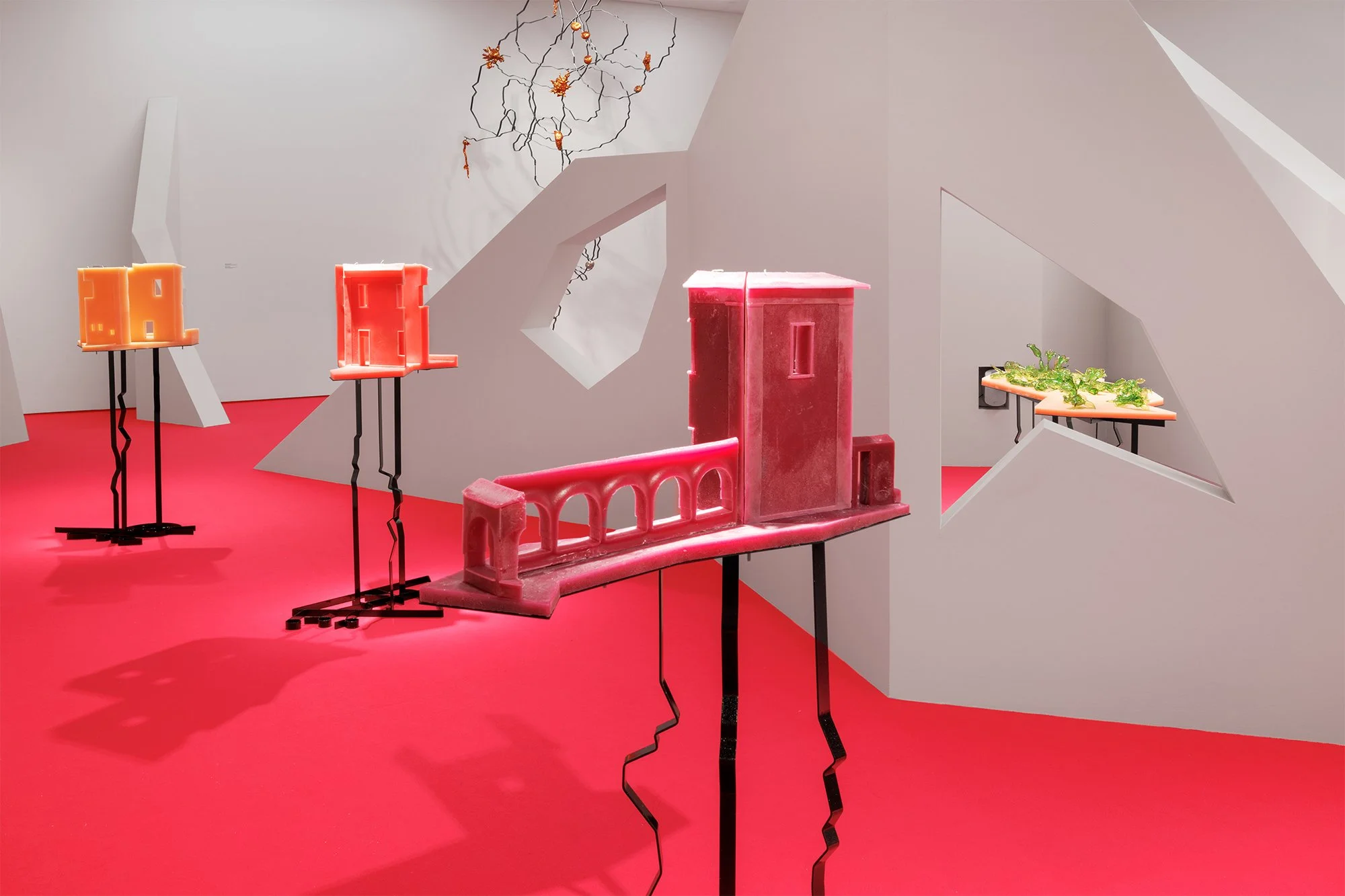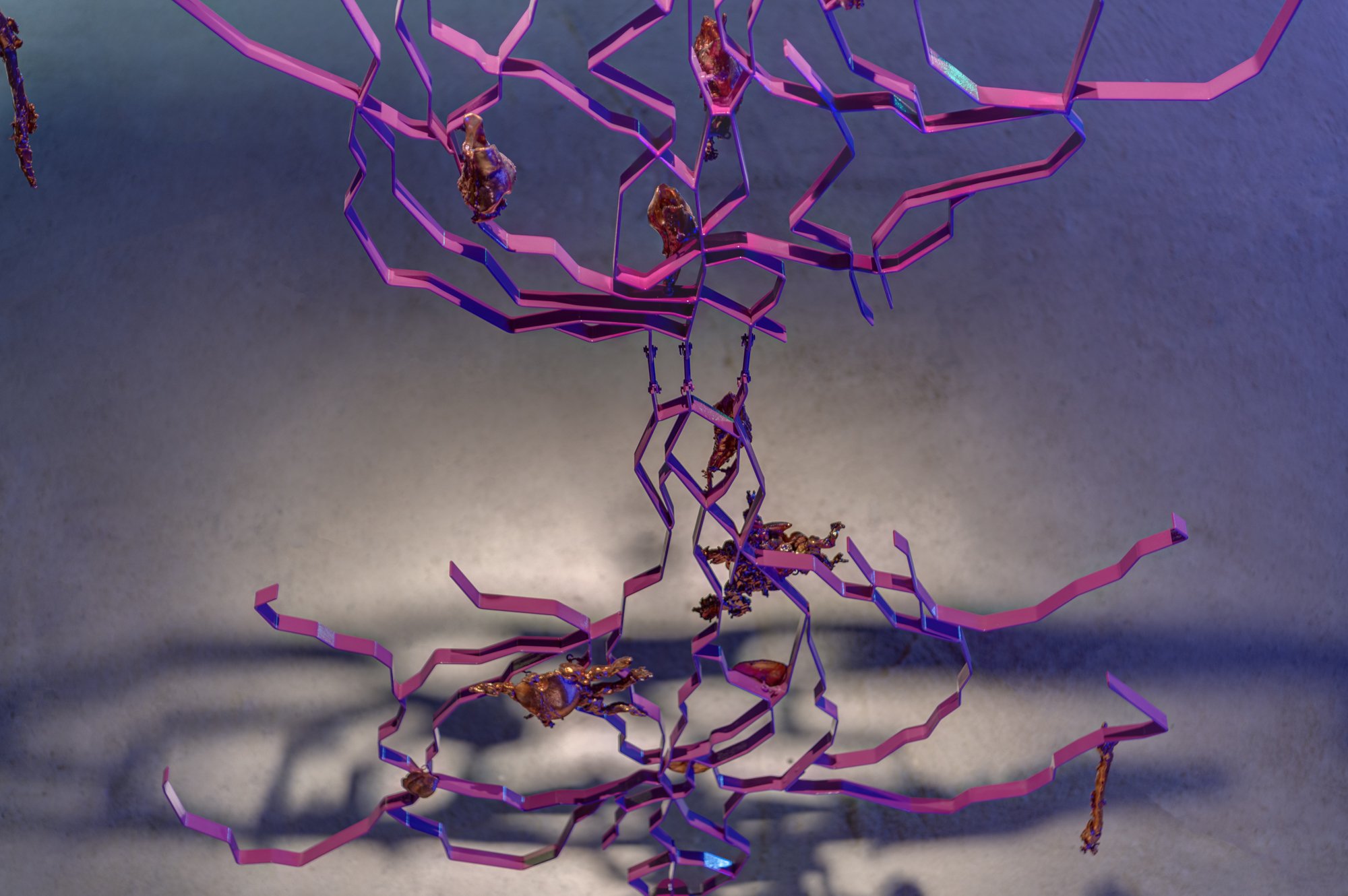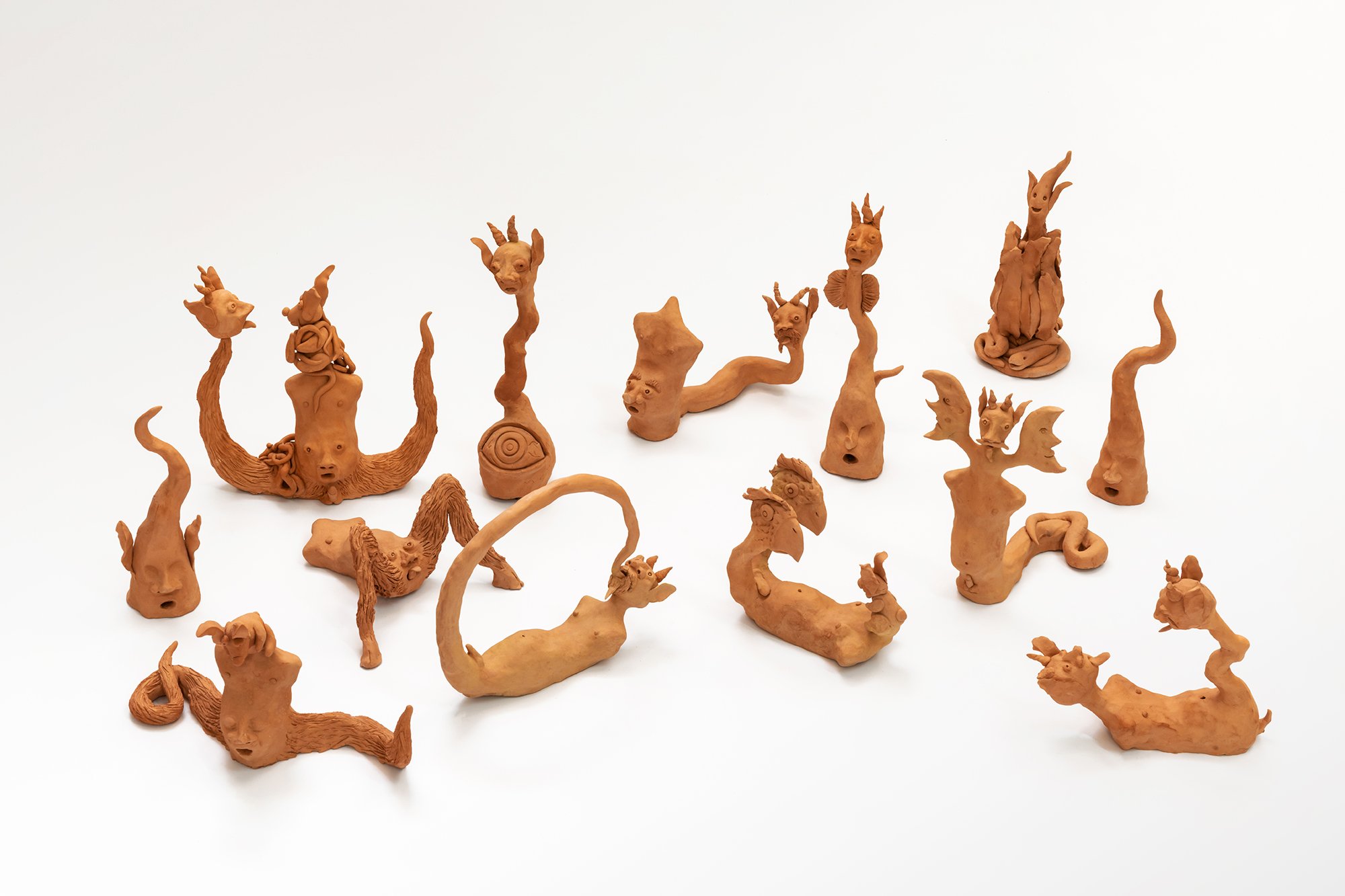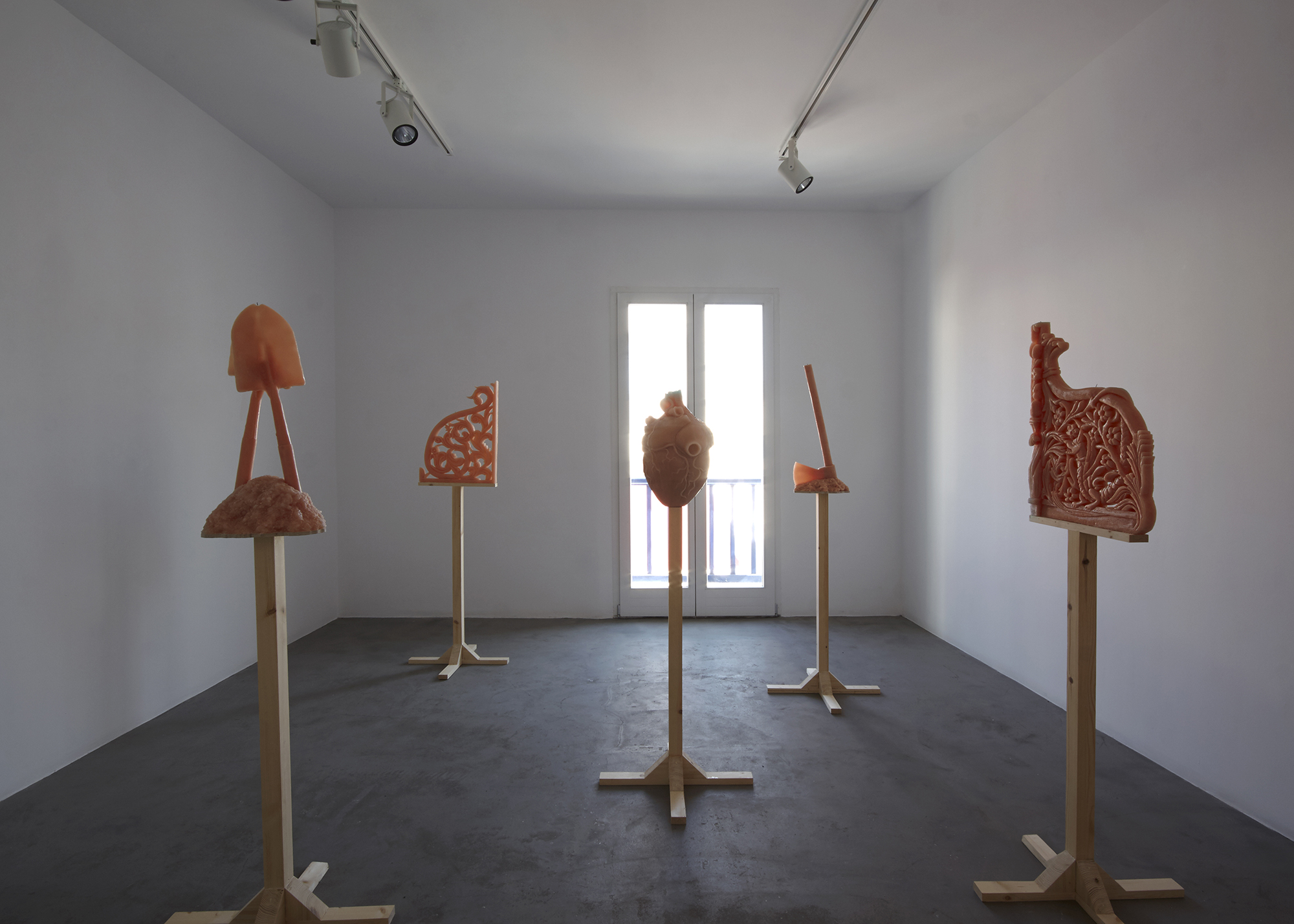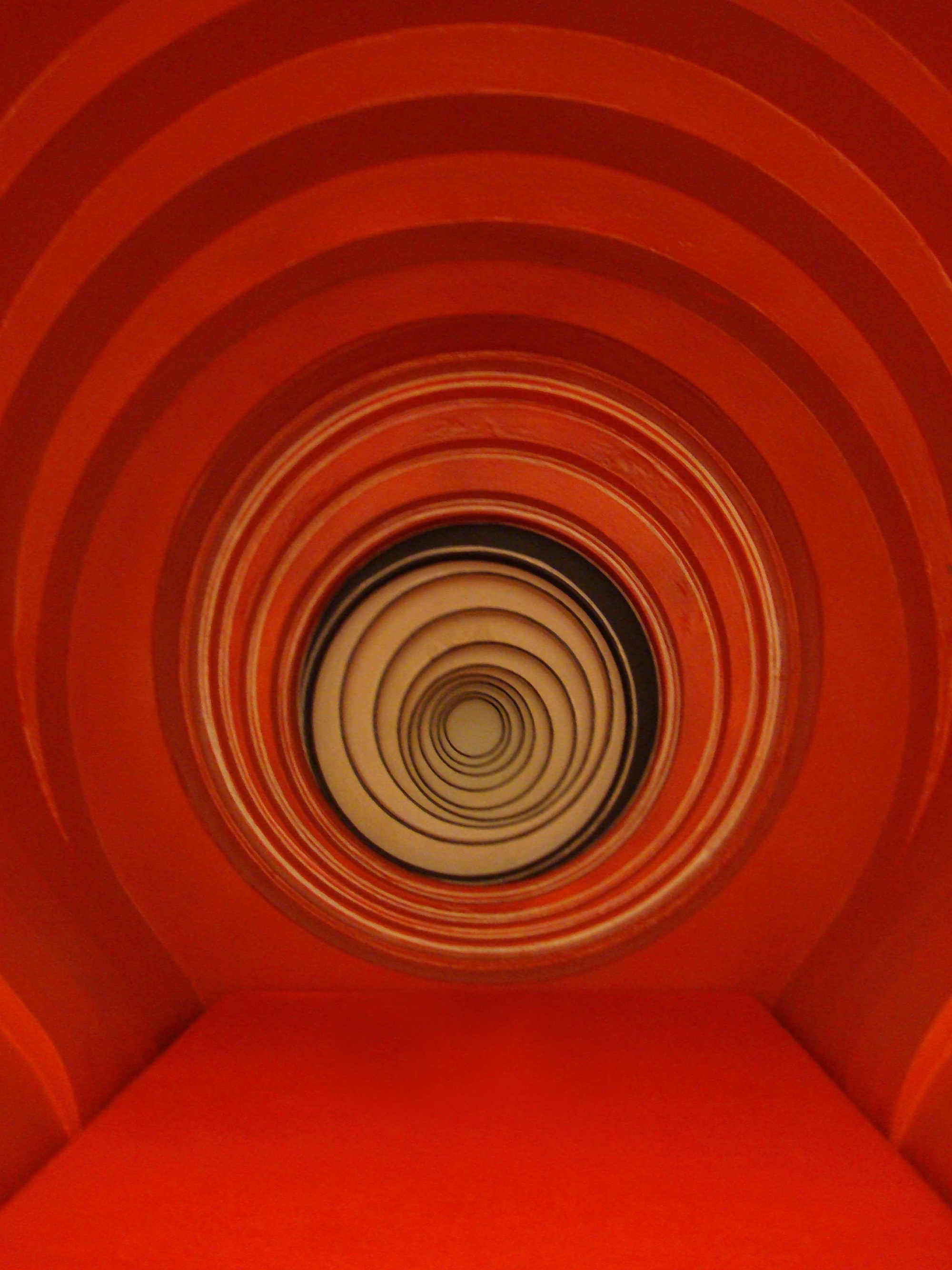The exhibition at EMST, “All Dreams Are Vexing”, is the outcome of the research in the summer of 2023 on the island of Spetses, at the house where the first Greek female painter, Eleni Boukoura-Altamoura (1821–1900) stayed isolated following the tragic premature deaths of her two children from tuberculosis. During that period, the painter became involved in spiritualism in an effort to reconnect with the spirits of her children, leaving behind her a handful of legends and a grimoire — a magical manuscript containing spells.
Upon entering the exhibition, the visitor crosses the threshold into the house’s corridors as well as into Eleni Boukoura-Altamoura’s mind. The exhibition space has been transformed into a total installation, a locus of “magic” where sculptures made of glass, wax, and bronze converse with sound and video works. As the wax sculptures burn and transform, the blown glass parts — breaths, ghosts, and the energy of an unseen world — symbolise the ineffable and the silenced, while the bronze elements of her sculptural compositions, that is, the human organs, the intestines, the plant stalks, and the flowers become a grounding force that keeps us anchored and present in the here and now.
Re-approaching the myth of “the madwoman in the attic” the exhibition seeks to frame the practice of magic through a new feminist perspective, where occultism and loss intersect with the hidden history of women's roles in the domestic economy and art.The exhibition unfolds around two research axes, firstly, the re-negotiation of Boukoura-Altamoura’s house as a symbol of geniality and isolation, as a second layer of skin that protects and suffocates her at the same time. Secondly, on the examination of symbols from Boukoura-Altamoura’s magical manuscript — one of the few existing ones in Greek letters – and their recontextualisation as carriers of memory.
Curated by Anna Mykoniati
The exhibition is a new production by EMST as part of the exhibition series “What if Women Ruled the World? Part 2”
